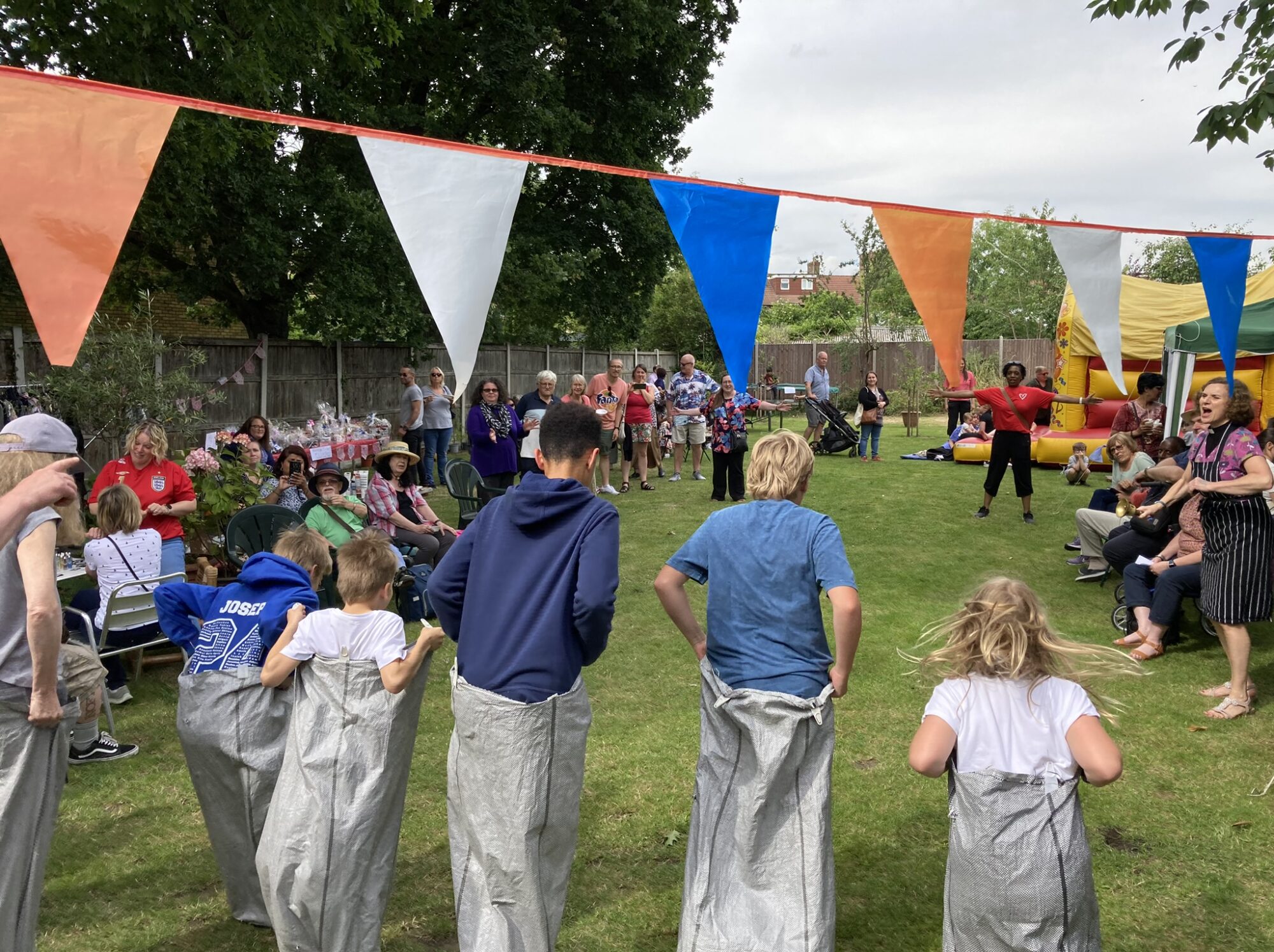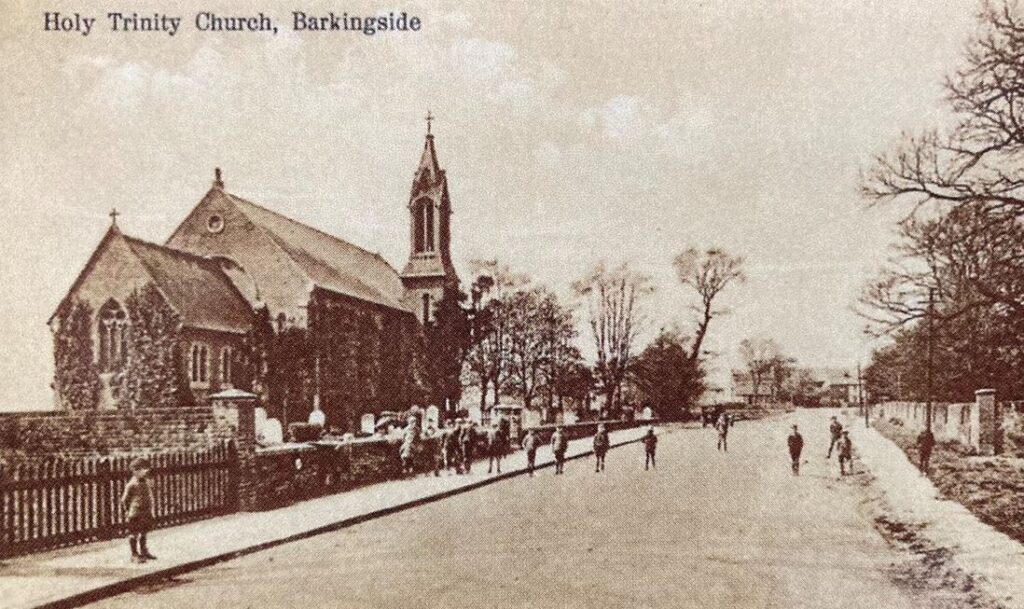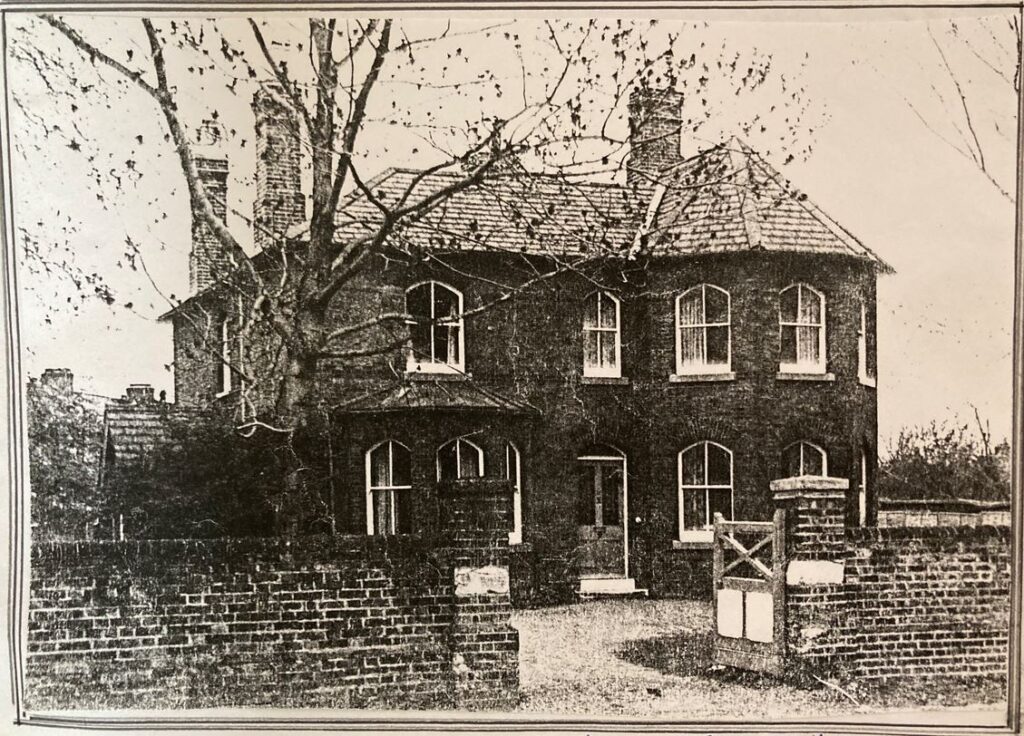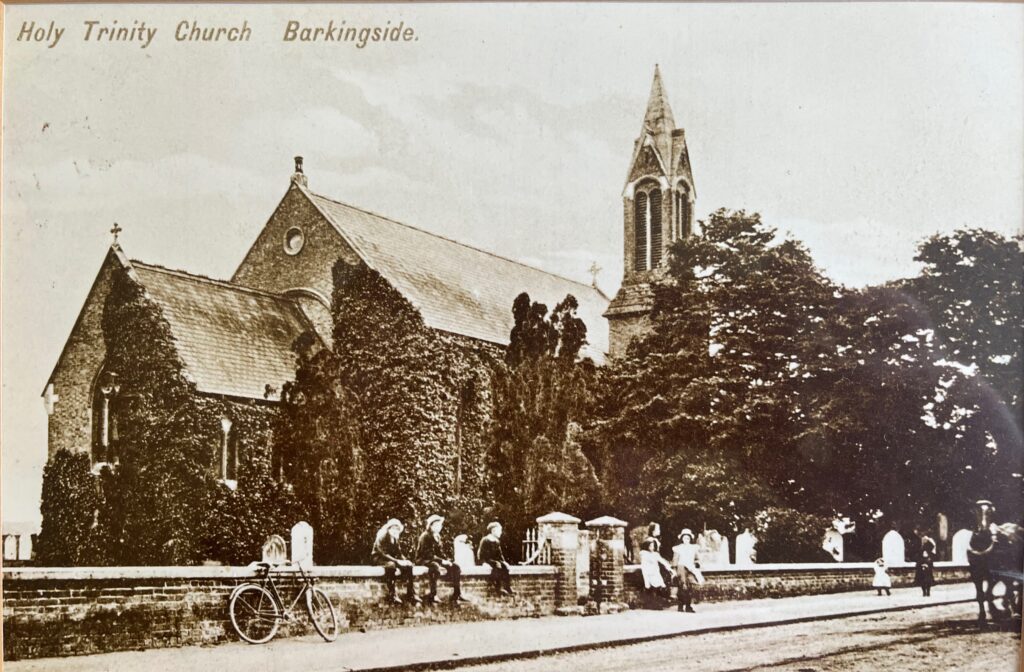HOLY TRINITY CHURCH BARKINGSIDE 1840 –
For centuries Barkingside and Great Ilford were both in the Parish of Barking, and all matters relating to these areas were dealt with by the Vestry which met at St Margaret’s Church Barking. The first mention of a Church in the Barkingside area was in 1653 when an acre of land in the forest near Gearies was assigned for the site of a new Church, but though the Church was built, it almost immediately began to fall into decay. Owing to a dispute as to the patronage of the living, no incumbent was ever appointed and shortly after the Restoration of Charles II, the Church became quite dilapidated and was never used.
Almost 200 years later, it was decided by the Vestry which met at St Mary’s Ilford, that a chapel should be built in the village of Barkingside, and in 1839 a piece of land known as Great Berry Field was given by Rr William Hibbit and Mr. John Wight, both of Blakesley, Northamptonshire. William Hibbit, it is known, was the owner of Gaysham Hall, a farm of some 239 acres which was leased to Mr Edward Campion.
Trinity Chapel, which was smaller than we know it today, consisting only of the present nave, was consecrated for use by the then Bishop of London, Bishop Blomfield, on July 22nd 1840.
In 1866 the Bishop’s licence was obtained for the building of the present Chancel (which was designed by a well-known architect of the day, Mr J P St Aubyn of the family of Lord St Levan of St Michael’s Mount), and the gallery at the west end of the Church was removed about 1886.
From the Vestry Minute Book of the Parish of Great Ilford, it was noted on April 15th 1841, that Mr Campion was appointed Parish Chapel Warden of Trinity Chapel, Barkingside, and so he continued for many years. His tombstone can be seen on the left as one leaves the Church – he died in 1855.
The original Vestry Minute Book of Trinity Chapel is still in use, and some of the more interesting entries are worth the search. In 1881, a Bill was passed dividing Barking into the two separate Parishes of Barking and Ilford, but it was decreed that all the deeds and documents should be deposited at Barking Town Hall where they remain to this day.
In the Church, your attention is drawn to the several memorial windows. Perhaps of most interest are two on the south side of the nave. One is in memory of Mr & Mrs Francis Whitebourn who lived at Great Gearies Barkingside and shows not only their portraits but also a picture of their residence. Next to this is a window in memory of Mr George Brown, successor to Mr Edward Campion at Gaysham Hall, and Church Warden for 39 years. The Brown family have always been closely connected with the Church. Mr Rupert Brown, the grandson of Mr George Brown, was also Church Warden for 22 years.
For more information on our windows click the file link below:
The windows on the north and south sides of the chancel display repeating patterns and are perfect examples of their Victorian period. The east window whilst not stained glass is nonetheless an important example of Victorian artistry of painted glass. At the top of the three lights are three triple patterns of circles which have something of a Celtic feel. The lights include repeating patterns of acanthus, pines, roses and suns. Christian symbolism is found in most of the large panels. In the middle of the centre light is a symbol of the Trinity and above this is a panel of the dove and beneath the Agnus Dei (the Lamb and Flag). In the south light, the panel is of a vine.
On the south wall of the chancel is a marble tablet mainly relating to the second son (buried in the crypt of St. Paul’s Cathedral) of Mr Spencer Charrington MP also of Great Gearies. Lieutenant Harold Carrington RN was killed by Bedouin Arabs whilst on a secret mission during the war in Egypt in 1882. It does, however, refer to Mr Spencer Charrington’s death and the fact that he was for many years Church Warden of this Parish (28 years). It also denotes the death of Mrs Charrington who survived her son by only six months. On the north side of the nave, another Church Warden (for 11 years) is remembered by the window in memory of Mr George Ingram.
Two other memorial gifts were installed in 1965. These are the Font and the new entrance doors to the Church both given by relatives of faithful parishioners. These were blessed and dedicated by the Bishop of Barking at a Festival Service on Trinity Sunday evening in 1965.
Our Vestry Book includes a reference to a ‘pew opener’ punished for being drunk on duty!
Leslie Crooks (warden 1931-1959) was badly wounded in 1914-18 and was advised that singing would strengthen damaged facial muscles so his baritone voice benefited the choir.
Barking Side stood on the outskirts of Hainault Forest (Henhault: Hean Holt (anglo-saxon: poor wood) or Héan Holt (high wood)). There were a few small houses and labourer’s cottages alongside the road, a church, a couple of public houses, and the Dr Barnardo’s charitable Village Home for Girls. The nearest station was three miles north at Ilford on the Great Eastern Railway.
In 1841 it became an Ecclesiastical District out of Great Ilford. The inhabitants numbering around 3,000 in 1895, double those of the 1871 census, were employed principally in agriculture. The name originates from the entrance to Hainault Forest which was on the nearest side of the older Forest to Barking Abbey some miles away.
The movement for a new parish church at Barkingside began in 1838 when a petition was sent to the Church Building Commissioners by inhabitants of Ilford, who promised to raise £1,000 for the purpose. The petition stated that the people of Barkingside were ‘very destitute and degraded’ owing to the temptations to which they were exposed by the proximity of the forest, the nature of their occupations, and their visits to the London markets. The local landowners, who were non-resident, were said to take little interest in the inhabitants. The only place of worship in the district was the private chapel at Aldborough Hatch. The commissioners agreed to give £350 towards a church, and a site was given by the owners of Gayshams Hall. The building was completed in 1840, and in 1841 Barkingside became a district chapelry. The new benefice was a perpetual curacy, in the gift of the Vicar of Great Ilford. In addition to the money spent on building the church, £1,455 had been invested as an endowment, a tithe rent charge of £45 was allotted from the vicarage of Great Ilford, and 20 acres of glebe were provided.
The church of THE HOLY TRINITY, Mossford Green, which stands in a graveyard, was designed by Edward Blore. It is a yellow-brick building in the ‘Norman’ style consisting of a nave, chancel (added about 1895), and a north-west porch forming the base of a small tower with a spire. North and west vestries were added in the 20th century. The church plate includes a silver paten from 1724.
Why not try a meditative walk around the church using the under noted guide – just click the link below:
Other local Churches:
St Peter, Aldborough Hatch: built in 1863 taken from the parish of Holy Trinity, Barkingside.
St George: opened 1899 iron mission church at the southern end of the parish of Barkingside, in the district then called the Beehive and now Gants Hill. 1927 a larger, temporary church was built and in the following year a new parish was formed from parts of Holy Trinity, Barkingside, and St. Clement, Ilford. The church of St. George consecrated in 1932, is on Woodford Avenue on the site of the original iron church.
St Laurence: At Horns Village, now Newbury Park, an iron mission church, dedicated to St. Laurence, was already in existence in Netley Road in 1890. It was enlarged in 1898 and remained attached to Holy Trinity, Barkingside, until 1934, when a conventional district was created from parts of the parishes of Holy Trinity, Barkingside, St. Peter, Aldborough Hatch, and St. Clement, Ilford, and a church hall was built in Emmott Avenue. In 1939 the present church of St. Laurence, Barkingside, was opened, and the district became a parish.
St Francis of Assisi: iron church, called the Maypole Mission, was opened in 1890 at Fulwell Hatch, north Barkingside. In 1935 the foundation stone of a temporary church was laid and in 1938 a conventional district was formed. The present church on Fencepiece Road was opened in 1956.
St Cedd: conventional district of St. Cedd, Barkingside, was formed in 1938 from the parishes of Holy Trinity, Barkingside, and Holy Trinity, South Woodford. In the same year, a church hall was built at the junction of Marston Road and Chalgrove Crescent for use as a temporary church and is still in use in 2016.



